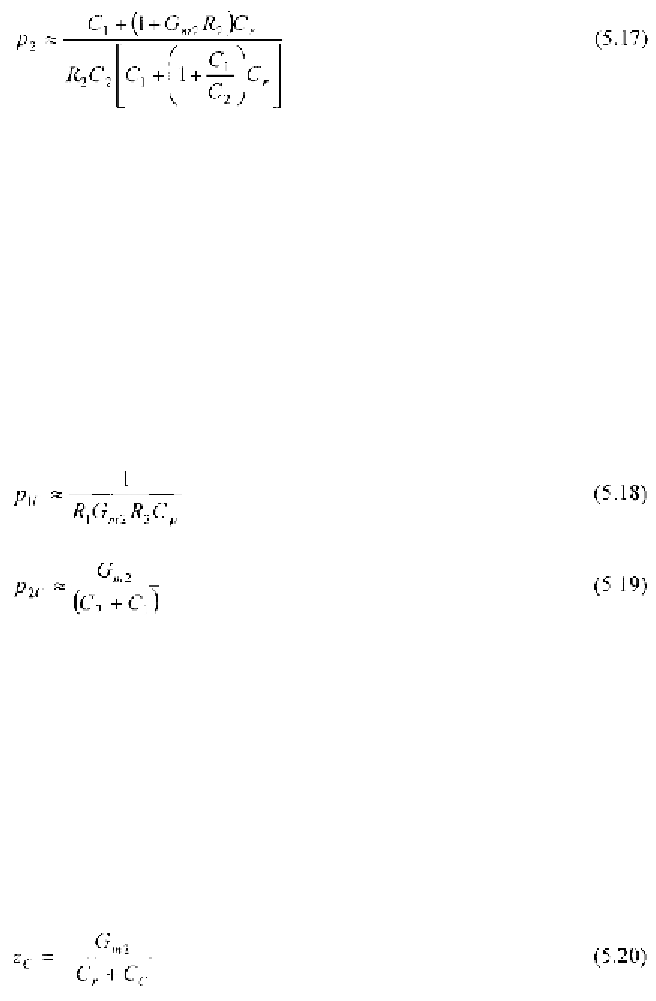Environmental Engineering Reference
In-Depth Information
From equations (5.15) to (5.17) the pole splitting due to Miller effect
becomes apparent. In fact, an increase in the internal feedback capacitance,
shifts the dominant pole and the second pole to a lower and higher
frequency, respectively (and also decreases the RHP zero). For this purpose,
to improve the separation of the two poles it is very efficient to multiply
Thus, pole-splitting compensation entails connecting a capacitor between
two phase inverting nodes of the open-loop amplifier. With reference to the
equivalent circuit in Fig. 5.2, the electrical impact of this additional element
is the replacement of the internal interstage capacitance,
by the
capacitance sum,
Letting
(5.16) and (5.17) can be further simplified to
where capacitance
is
usually
significantly
larger
than
and has also been
assumed to
be greater than either
or
Note that the value of the
compensated
second
pole
given
by
(5.19)
encounters
an
intuitive
justification. In fact, at the frequency at which
it occurs (i.e.
after the
transition
frequency or equivalently the gain-bandwidth
product),
capacitance
can be considered as short-circuited. Hence, the input and the
output of the voltage-controlled current-source are shorted, and are in
parallel and the equivalent resistance seen at their terminals is approximately
In contrast, the expression of the zero (5.15) becomes
Although can exert a significant influence on the high-frequency response
of the compensated amplifier, the following discussion presumes tacitly that
Hence, the gain-bandwidth product and the phase margin are
















